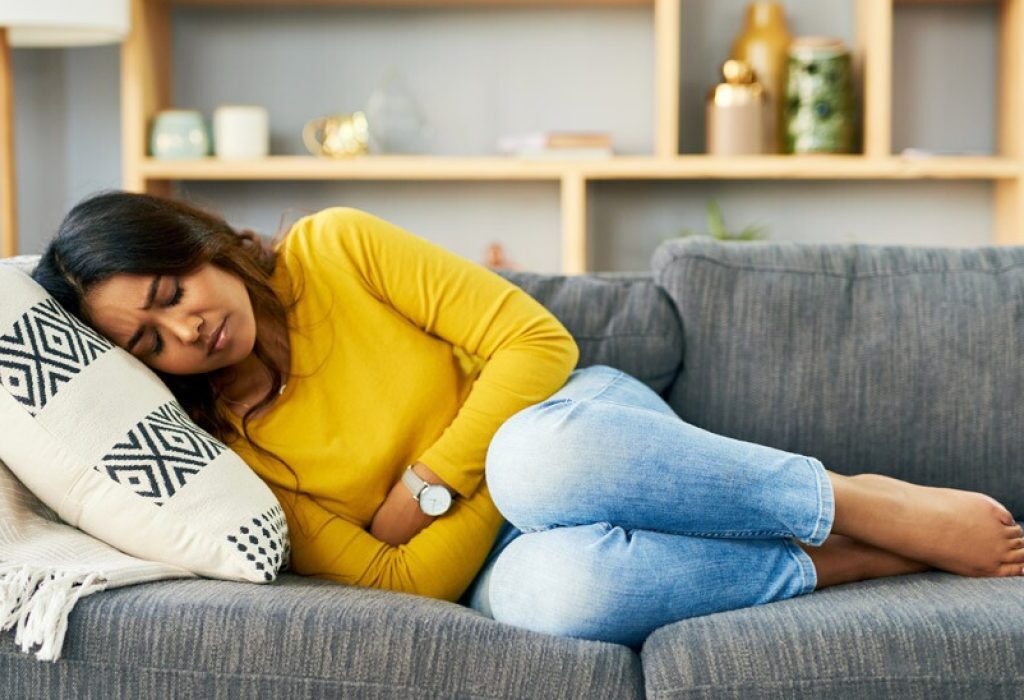
Introduction
Period pain, those dreaded cramps that seem to arrive with the punctuality of a tax bill and the welcome of a surprise pop quiz. For many women, periods are a monthly visitor that brings not just hormonal shifts, but also a symphony of aches and pains in the lower abdomen. But why do we experience this discomfort, and more importantly, how can we find relief? Buckle up, because we’re about to delve into the mystery behind period pain, a fascinating (and sometimes frustrating) world!
What Causes Period Pain?
The culprit behind period pain, scientifically known as dysmenorrhea, is a villain named prostaglandins. These hormone-like substances are produced in the lining of the uterus and play a crucial role in menstruation. However, sometimes, prostaglandins get a little overzealous, causing the muscles in your uterus to contract too much. Imagine your uterus as a balloon – excessive prostaglandin production is like someone blowing up the balloon too quickly, leading to tightness and discomfort.
Primary vs. Secondary Dysmenorrhea
There are two main types of dysmenorrhea:
- Primary Dysmenorrhea: This is the most common type, affecting up to 50% of menstruating women. It typically starts shortly before or during your period and doesn’t necessarily indicate an underlying medical condition.
- Secondary Dysmenorrhea: This type is less common but can be more severe. It usually begins later in life and can be a sign of an underlying condition like endometriosis, uterine fibroids, or pelvic inflammatory disease (PID).
Symptoms of Period Pain

Period pain isn’t just about a dull ache in your lower abdomen. It can manifest in a variety of ways, including:
- Cramping in the lower abdomen
- Lower back pain
- Pain that radiates down your legs
- Fatigue
- Nausea
- Vomiting
- Bloating
- Diarrhea
- Headache
The intensity and duration of period pain can vary greatly from woman to woman. Some may experience mild discomfort, while others are doubled over in pain. There’s no “normal” when it comes to period pain – listen to your body and seek medical advice if your symptoms are severe or interfere with your daily life.
Treatment Options for Period Pain
Thankfully, you don’t have to just grit and bear the pain. Here are some strategies to help you manage those monthly cramps:
- Over-the-Counter Pain Relievers: Nonsteroidal anti-inflammatory drugs (NSAIDs) like ibuprofen or naproxen can help reduce prostaglandin production and alleviate pain.
- Heat Therapy: Apply a heating pad or hot water bottle to your lower abdomen for a soothing and muscle-relaxing effect. Imagine your uterus as a tense muscle – heat helps it loosen up and ease the discomfort.
- Pain-Relieving Massages: A gentle massage on your lower back or abdomen can work wonders in reducing cramps and promoting relaxation.
- Lifestyle Changes: Getting regular exercise, eating a healthy diet, and managing stress can all contribute to reducing period pain. Think of your body as a well-oiled machine – healthy habits keep it running smoothly, even during your period
For some women, alternative therapies like acupuncture, yoga, or herbal remedies may offer relief. However, it’s important to discuss these options with your doctor before trying them. Oral contraceptives and hormonal IUDs can be a game-changer for period pain management. They regulate hormone levels, which can help decrease prostaglandin production and ultimately reduce cramps.
When to See a Doctor
If your period pain is severe, lasts for more than a few days, or interferes with your daily activities, don’t hesitate to seek medical advice. A doctor can help diagnose the cause of your pain and recommend appropriate treatment options.
Conclusion
Period pain is a common experience, but it shouldn’t be your norm. By understanding the causes and exploring treatment options, you can take control of your menstrual cycle and reclaim your comfort. Remember, a healthy period is a normal part of being a woman. Embrace your cycle, and don’t let pain steal your shine!
You Might Also Like….
- Tech that Offers Hope for Cure of Blindness without Surgery
- Creativity and mental illness: is there a link?
- The Unbelievable Science of Laughter: Why We LOL and How It Benefits Us
FAQs
Q1: Is it normal to experience mood swings during my period?
Absolutely! Fluctuating hormone levels can affect your mood, causing irritability, sadness, or anxiety. These premenstrual mood swings are completely normal and typically subside once your period starts.
Q2: Can diet affect period pain?
Yes! A healthy diet rich in fruits, vegetables, and whole grains can help reduce inflammation and potentially lessen cramps. Conversely, foods high in sugar, processed fats, and caffeine may worsen symptoms.
Q3: What are some healthy habits that can ease period pain?
- Regular Exercise: Physical activity helps reduce pain and improve overall well-being. Aim for at least 30 minutes of moderate-intensity exercise most days of the week.
- Stress Management: Chronic stress can exacerbate period pain. Relaxation techniques like yoga, meditation, or deep breathing can be helpful.
- Adequate Sleep: When you’re well-rested, your body is better equipped to handle pain. Aim for 7-8 hours of sleep each night.
Q4: Can certain positions worsen period pain?
For some women, lying on their back can intensify cramps. Try curling up on your side with a pillow between your knees for better comfort.
Q5: I’ve tried everything, but my period pain is unbearable. What should I do?
If you’ve explored various treatment options and your period pain continues to disrupt your life, consult your doctor. They can investigate potential underlying conditions and recommend stronger pain medication or discuss hormonal birth control options. Remember, you don’t have to suffer in silence – there is help available!

